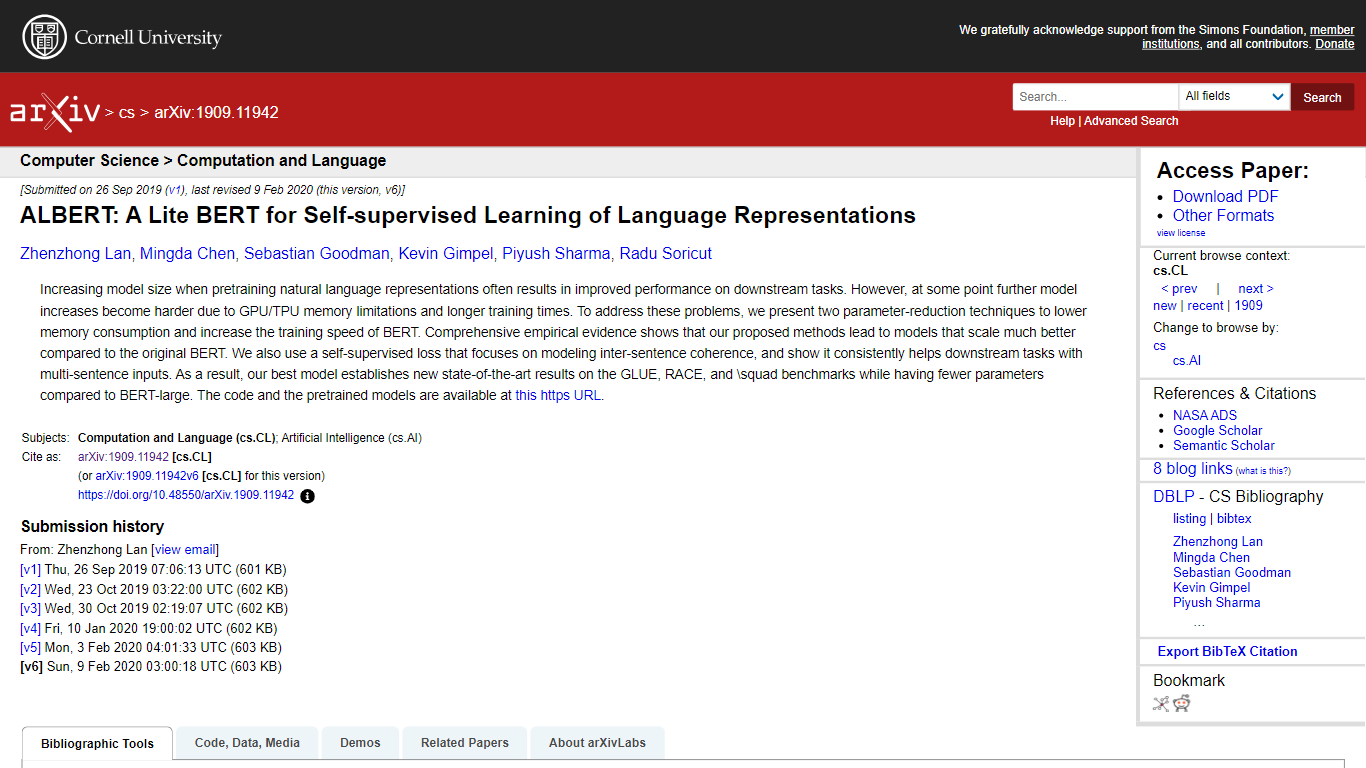ALBERT vs GPT-4
Dive into the comparison of ALBERT vs GPT-4 and discover which AI Large Language Model (LLM) tool stands out. We examine alternatives, upvotes, features, reviews, pricing, and beyond.
When comparing ALBERT and GPT-4, which one rises above the other?
When we compare ALBERT and GPT-4, two exceptional large language model (llm) tools powered by artificial intelligence, and place them side by side, several key similarities and differences come to light. The users have made their preference clear, GPT-4 leads in upvotes. The upvote count for GPT-4 is 9, and for ALBERT it's 6.
Disagree with the result? Upvote your favorite tool and help it win!
ALBERT

What is ALBERT?
ALBERT, short for "A Lite BERT," is an optimized version of the widely-used BERT model for natural language processing tasks. Presented in the arXiv paper by Zhenzhong Lan and colleagues, ALBERT offers two parameter-reduction techniques that significantly decrease memory consumption and increase the training speed of BERT without sacrificing performance.
This advancement addresses the challenge of GPU/TPU memory limitations and the typically lengthy training times associated with increasing model sizes. The paper demonstrates through empirical evidence that ALBERT not only performs better than BERT on a variety of benchmarks, like GLUE, RACE, and SQuAD, but it also achieves state-of-the-art results with a smaller parameter count. The research further introduces a self-supervised loss function that enhances the model’s ability to understand inter-sentence coherence, leading to a substantial improvement on tasks requiring multi-sentence inputs. The authors provide the code and pretrained models for ALBERT, making them accessible for widespread use in the NLP community.
GPT-4

What is GPT-4?
GPT-4 is the latest milestone in OpenAI’s effort in scaling up deep learning.
GPT-4 is a large multimodal model (accepting image and text inputs, emitting text outputs) that, while less capable than humans in many real-world scenarios, exhibits human-level performance on various professional and academic benchmarks. For example, it passes a simulated bar exam with a score around the top 10% of test takers; in contrast, GPT-3.5’s score was around the bottom 10%. We’ve spent 6 months iteratively aligning GPT-4 using lessons from our adversarial testing program as well as ChatGPT, resulting in our best-ever results (though far from perfect) on factuality, steerability, and refusing to go outside of guardrails.
GPT-4 is more creative and collaborative than ever before. It can generate, edit, and iterate with users on creative and technical writing tasks, such as composing songs, writing screenplays, or learning a user’s writing style.
ALBERT Upvotes
GPT-4 Upvotes
ALBERT Top Features
Parameter-Reduction Techniques: Techniques that lower memory consumption and boost BERT's training speed.
Improved Model Scaling: ALBERT scales better than the original BERT, even with fewer parameters.
State-of-the-Art Performance: Achievements include new high scores on GLUE, RACE, and SQuAD benchmarks.
Self-Supervised Loss Function: A novel loss function that improves modeling of inter-sentence coherence.
Open Source Models: The pretrained models and codebase are publicly available for community use.
GPT-4 Top Features
No top features listedALBERT Category
- Large Language Model (LLM)
GPT-4 Category
- Large Language Model (LLM)
ALBERT Pricing Type
- Freemium
GPT-4 Pricing Type
- Freemium
